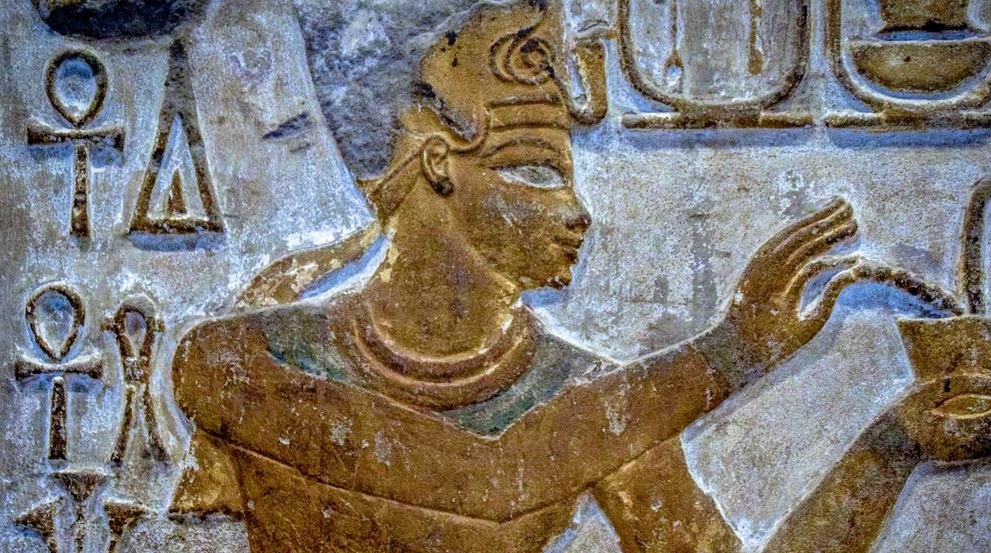Fascinating Facts About Ancient Egypt - Unveiling the Mysteries |

|
|
Photo by: Tom Podmore |
|
More Ancient Facts: Ancient Egypt, a civilization that flourished along the Nile River for thousands of years, continues to captivate us with its monumental architecture, intricate art, and rich culture. From the iconic pyramids to the enigmatic hieroglyphs, there's so much to discover. Here are 12 fascinating facts that offer a glimpse into this incredible ancient world. Egyptians Invented ToothpasteBelieve it or not, the ancient Egyptians were quite concerned with oral hygiene. Archaeological evidence suggests they invented a form of toothpaste as early as 5000 BC. Their recipes included ingredients like powdered ox hooves, ashes, burnt eggshells, and pumice. While it might sound unpleasant, it was a step towards the dental care we know today. Both Men and Women Wore MakeupMakeup in ancient Egypt wasn't just for aesthetics; it also had practical and symbolic purposes. Both men and women wore kohl eyeliner to protect their eyes from the sun and flies, and they believed it had magical properties. They also used green eyeshadow made from malachite. Cats Were Revered AnimalsIn ancient Egypt, cats were held in high esteem and were considered sacred animals. They were associated with the goddess Bastet, the protector of the home and fertility. Killing a cat, even accidentally, could result in severe punishment, and when a family cat died, the entire household would often go into mourning, as detailed by the National Geographic. The Pyramids Were Built Over a Long PeriodThe construction of the famous pyramids of Giza didn't happen overnight. The Great Pyramid of Giza, the oldest and largest of the three, took an estimated 20-30 years to build and was completed around 2560 BC during the Fourth Dynasty. Hieroglyphics Were More Than Just PicturesHieroglyphics, the ancient Egyptian writing system, wasn't simply a collection of pictures. While some symbols represented objects or ideas (ideograms), others represented sounds (phonograms), making it a complex and sophisticated writing system. Ancient Egyptians Enjoyed Board GamesLife in ancient Egypt wasn't all work and worship. They also enjoyed leisure activities, including board games. One popular game was Senet, which dates back to around 3000 BC. The rules of Senet are not entirely clear, but archaeological finds suggest it was a game of strategy and chance, as discussed by the UCL Culture. Pharaohs Wore False BeardsAs a symbol of their power and connection to the gods, Egyptian pharaohs, both male and female (like Hatshepsut), often wore false beards. These beards were typically made of braided hair and were held in place by a strap. The World History Encyclopedia provides further details on pharaonic regalia. Mummification Was a Complex ProcessMummification, the preservation of bodies for the afterlife, was a complex and lengthy process that could take up to 70 days. It involved removing internal organs, drying the body with natron salt, and wrapping it in layers of linen. Women Had Significant RightsCompared to many other ancient societies, women in ancient Egypt enjoyed a relatively high level of legal and economic rights. They could own property, initiate divorce, and even pursue legal disputes. Information on the roles of women can be found on resources like the PBS website. They Developed Advanced Medical KnowledgeAncient Egyptians had a surprisingly advanced understanding of medicine. Evidence suggests they performed surgeries, set broken bones, and had knowledge of various herbs and remedies. The National Library of Medicine has resources detailing ancient Egyptian medical practices. The Nile River Was Crucial to Their CivilizationThe Nile River was the lifeblood of ancient Egypt. Its annual flooding provided fertile soil for agriculture, and it served as a vital transportation route. Without the Nile, the flourishing of this civilization would have been impossible. They Believed in a Complex AfterlifeBelief in the afterlife was central to ancient Egyptian culture. They had a complex system of gods and goddesses, and they believed that through proper preparation (including mummification and providing offerings), individuals could achieve eternal life in the afterlife, as explained by the Ancient History Encyclopedia. Ancient Egypt: An InspirationAncient Egypt continues to fascinate and inspire us. These 12 facts offer just a small glimpse into the rich and complex world of this incredible civilization. Further exploration into their history and culture reveals even more astonishing details about their lives and achievements. Some Ancient Egypt FAQsLooking for more on ancient Egypt? Check out some FAQs. What was the main source of water for ancient Egypt?The main source of water for ancient Egypt was the Nile River. Its annual flooding was essential for agriculture and sustained life in the arid climate. Were the pyramids built by slaves?While the exact nature of the workforce is debated, current archaeological evidence suggests that the pyramids were primarily built by skilled laborers, craftsmen, and other workers who were organized into crews and compensated for their efforts. The idea of a massive slave labor force is largely outdated, as discussed by sources like the Britannica entry on the Giza pyramids. What was the purpose of mummification?The primary purpose of mummification in ancient Egypt was to preserve the body for the afterlife. Egyptians believed that the soul needed a physical vessel to return to in order to live eternally. Did women have any power in ancient Egypt?Yes, women in ancient Egypt had a significant degree of legal and economic rights compared to women in many other ancient societies. They could own property, conduct business, initiate divorce, and even rule as pharaohs, as seen with figures like Hatshepsut. More information can be found on resources like the PBS website. What were hieroglyphics used for?Hieroglyphics were used for a variety of purposes, including recording historical events, religious texts, administrative records, and even personal communication. They adorned temple walls, tombs, and papyrus scrolls. |